Advertisements
Advertisements
प्रश्न
Fig. shows two rays of light Op and OQ coming from an object at the bottom of a pond, incident on the water surface.
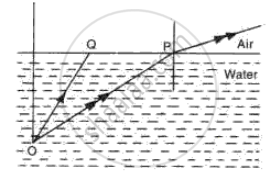
(a) Mark on the diagram
(i) The angle of incidence of ray OP,
(ii) The angle of refraction of ray Op,
(iii) The position of image of the object as seen from above.
(iv) An approximate path of the ray OQ.
(b) Explain, why do the rays of light change directions on passing from water to air.
(c) A fish in water sees everything outside the water by rays of light entering its eye in a small cone of light. Draw a diagram and explain how does this happen.
उत्तर

(i) Angle of incidence (i) of ray OP is marked in the above diagram.
(ii) Angle of refraction (r) of ray OP is marked in the above diagram.
(iii) The position of image of the object (O') as seen from above is marked in the diagram.
(iv) An approximate path of ray OQ is shown in the above diagram.
(b) Water is a denser medium as compared to air; so on passing from water (denser) to air (rarer) the speed of light of light increases and it bends away from the normal.
(c)
Refraction is the bending of light as it passes from a medium of one optical density into a medium of a different optical density, as from air to water or water into air. The amount of bending is dependent upon the incident angle of the light. In the diagram below, a light ray, "A" strikes the water at right angles and passes through the surface without bending. But as the incident angle decreases (becomes less than 90 degrees) the light bends more and morerays "B" and "C." Light striking the surface parallel to the surface, bends downward.
Since light is coming into the water from all directions, refraction creates a cone of light with its base on the surface and its apex at the fish's eye. The base of the cone is a circular opening at the surface through which the fish sees the entire outside world. This opening is called the "Fish's Window". Only the light passing through the window enters the fish's eye. Notice line "D," It's a ray entering the water beyond the window; refraction bends it such that it cannot reach the fish's eye.
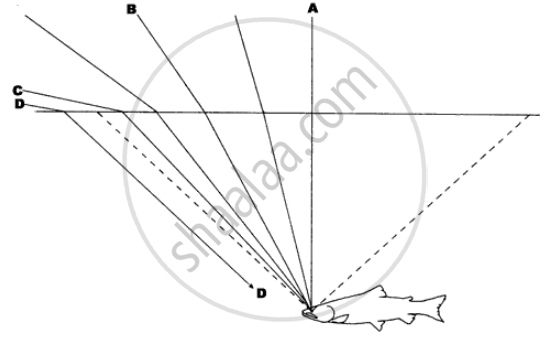
APPEARS IN
संबंधित प्रश्न
State the condition when a lens is called an equi-convex or equi-concave.
The diagram below shows a lens as a combination of a glass slab and two prisms.
- Name the lens formed by the combination.
- What is the line XX’ called?
- Complete the path of the incident ray AB after passing through the lens.
- The final emergent ray either meets XX’ at a point or appears to come from a point on XX’. Label it as F. What is this point called?
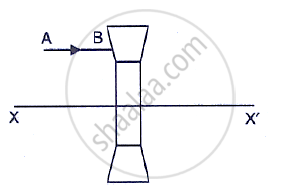
A ray of light after refraction through a lens emerges parallel to the principal axis of the lens. The incident ray either passes through ______.
State the condition of the following:
A lens has both its focal lengths equal.
State the condition of the following:
A ray passes undeviated through the lens.
What type of lenses are used in spectacles worn by an old lady for knitting?
In the following diagram , the object and the image formed by the respective lenses are shown. Complete the ray diagram, and locate the focus. Find the focal length of the lens.
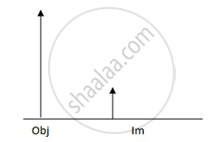
Make the rrect choices in the following items :
ln fig, , a real image of a point objert O is formed, Which of the following statements is true about each of the arrangements?
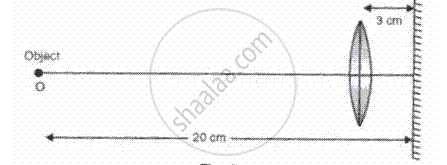
(i) The object is at the principle focus of the lens
(ii) The focal length of the lens is 17 cm
(iii) lf the mirror is moved so that it is 6 cm from the lens image will also move
State the nature and position of the object on the principal axis to obtain a real and magnified image.
Complete the following diagram and state what happens to the ray of light after refraction through the lens.

